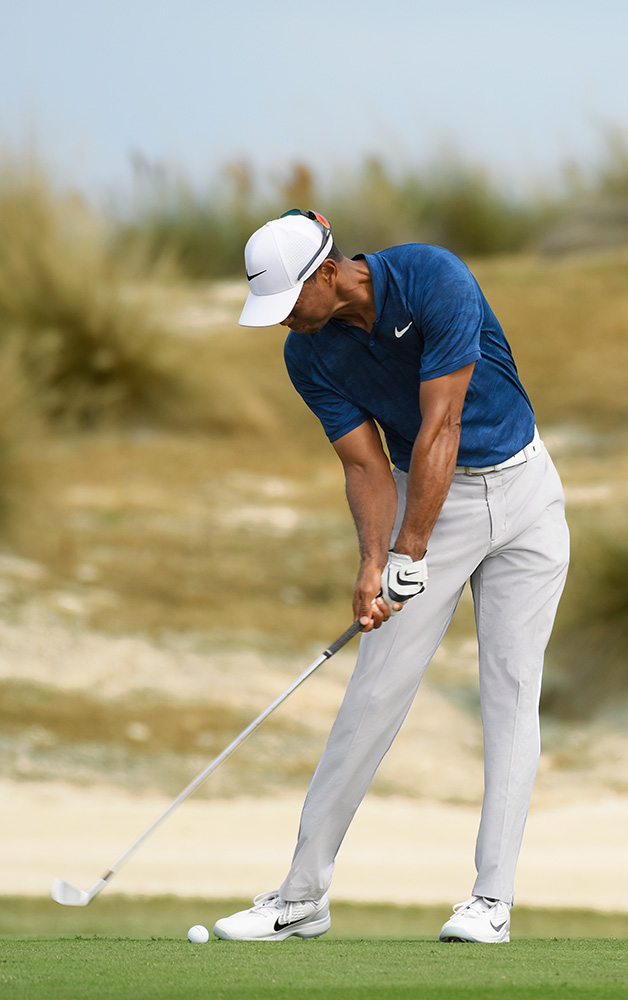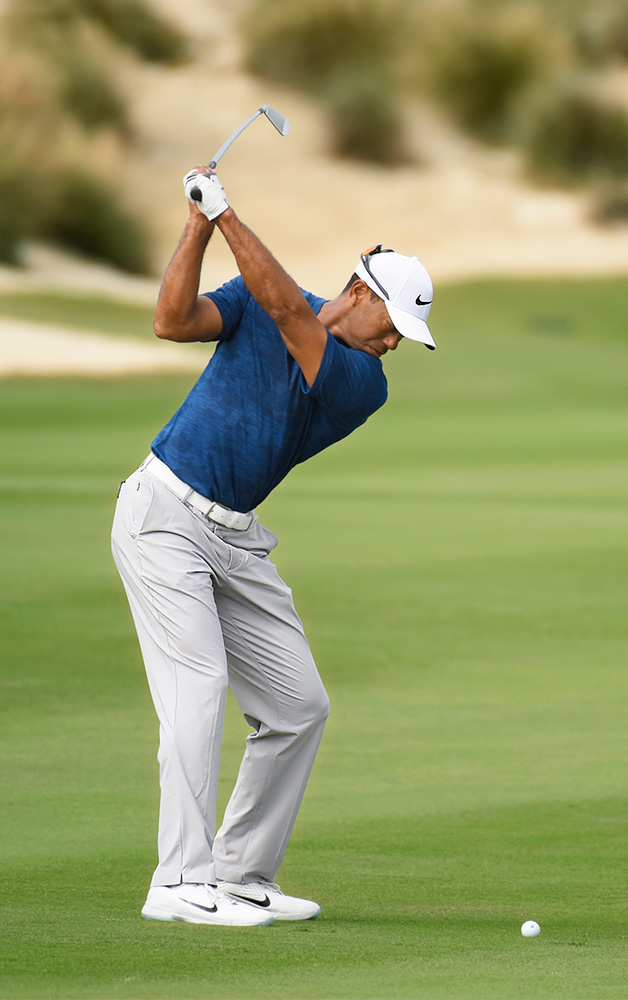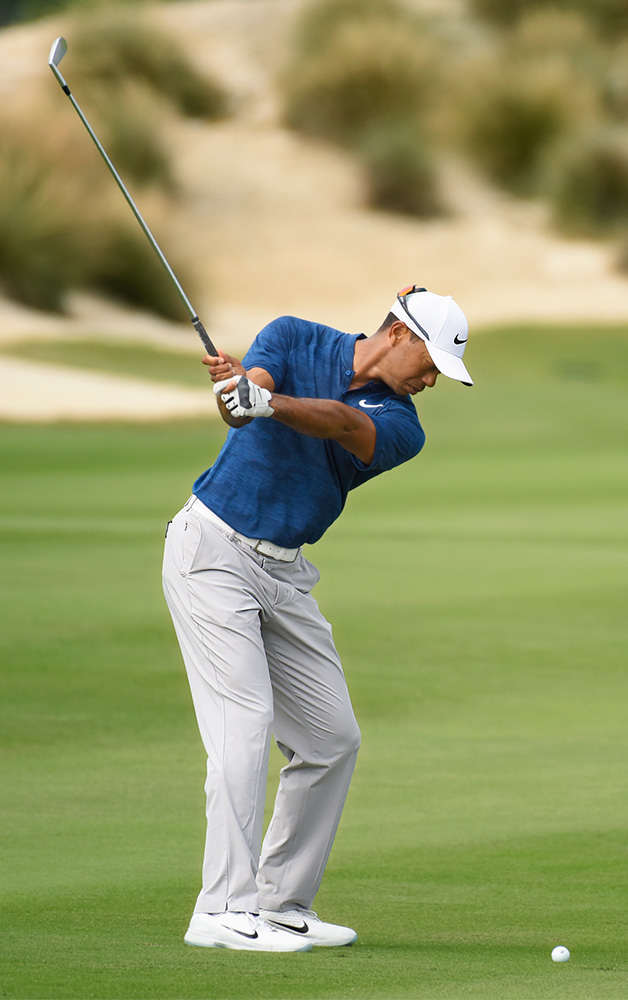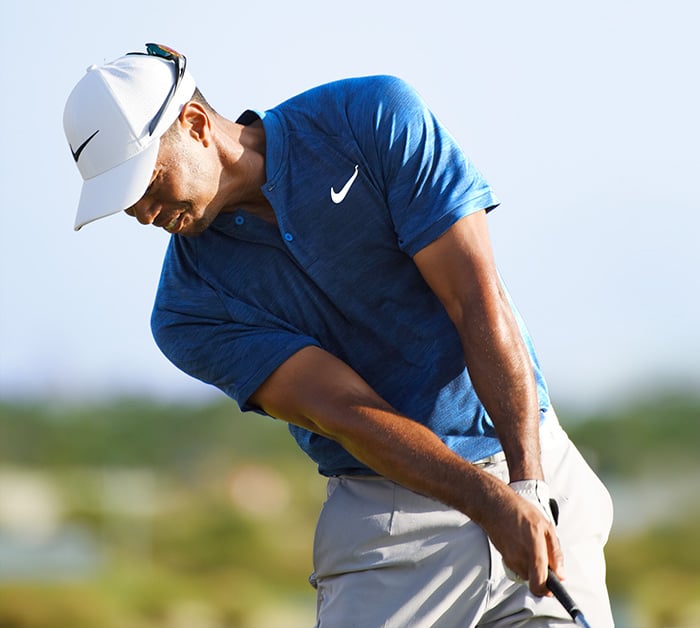Tiger’s iron game is (still) a work of art in progress.
Let’s start with an important point: Tiger Woods might be the best iron player of all time. When you set the bar that high, anything less than peak performance, i.e. hitting shots like the mere mortals on either side of you on a tour range, can seem like a comedown.
 Tiger’s ball-striking isn’t as good as it was when he was world No.1 for 683 weeks, but we might not see anybody hit it like that again for 50 years. Still, Tiger’s historic willingness to change anything if he thought it could make him better is still serving him well. I can’t think of another world-class player willing to make so many big changes so many times. And that openness is what keeps him out there working and improving when he has nothing left to prove.
Tiger’s ball-striking isn’t as good as it was when he was world No.1 for 683 weeks, but we might not see anybody hit it like that again for 50 years. Still, Tiger’s historic willingness to change anything if he thought it could make him better is still serving him well. I can’t think of another world-class player willing to make so many big changes so many times. And that openness is what keeps him out there working and improving when he has nothing left to prove.
So where does Tiger stand after generations of swing changes and some serious damage to his body? I call his iron swing a “buffet” of the things he learned from Butch Harmon, Hank Haney, and Sean Foley. There’s a lot of good, along with a few things he could improve.
When Tiger worked with Butch Harmon, his left-hand grip was stronger, meaning his left palm was turned more on top of the handle. That grip let him load up, then fire his lower body and launch everything through impact, which produced the power that made him so long. Butch also got him into that classic top-of-backswing wrist position, where you could lay a ruler flat on the back of his hand, and it would run right down his arm. That really helped the clubface stay square.
With Hank Haney, Tiger’s left-hand grip moved to a more neutral position, because they wanted to make it easier to work the ball in either direction. And by adjusting his right hand so the palm faced the target more, Hank helped Tiger stop taking the club across the line (pointing to the right of the target) at the top. Tiger had better control when the shaft was facing closer to parallel with the target line. He also was able to keep the club in front of his torso on the downswing – more control.

 Under Sean Foley, the left hand got a little stronger again, which helped Tiger start using the ground more effectively. His grip and swing are a blend now. He’s using Butch’s left-hand position, Hank’s right-hand position and Sean’s leveraging move with the ground. The result? This season he’s back near the top in greens in regulation and has some of the tour’s best long-iron stats. His short-iron stats are trailing, but that’s a result of how well he’s shallowing the club into impact. Being shallow is great for longer irons, but you need a steeper downswing with shorter clubs to control distance. His short-iron struggles also could be the result of finding his long game. He’s actually hitting it far – and relatively straight – for the first time in a decade, so his off-speed shots need more fine-tuning. I have no doubt that with more reps, as he likes to say, he’ll dial them in.
Under Sean Foley, the left hand got a little stronger again, which helped Tiger start using the ground more effectively. His grip and swing are a blend now. He’s using Butch’s left-hand position, Hank’s right-hand position and Sean’s leveraging move with the ground. The result? This season he’s back near the top in greens in regulation and has some of the tour’s best long-iron stats. His short-iron stats are trailing, but that’s a result of how well he’s shallowing the club into impact. Being shallow is great for longer irons, but you need a steeper downswing with shorter clubs to control distance. His short-iron struggles also could be the result of finding his long game. He’s actually hitting it far – and relatively straight – for the first time in a decade, so his off-speed shots need more fine-tuning. I have no doubt that with more reps, as he likes to say, he’ll dial them in.
It seems like we’re talking a lot about his grip – but we should be. The grip change last year was a big deal because it lets Tiger get back to what he does best: the weaker right-hand position helps keep the face square longer, and the stronger left-hand lets him rotate his hips hard without worrying about missing right.
If you return to the iron-swing sequence on the previous page, you’ll see that Tiger’s heels stay close to the ground. He’s doing a much better job rotating and leveraging [the ground] as he did in his prime. For a time, he had stopped doing his signature head drop at the start of the downswing – but that drop wasn’t a flaw. It was a sign he was loading up so he could explode into the shot. He’s loading, rotating his hips and keeping the face square. He’s back to letting his lower body help pull the club through impact. And he’s got his clubhead speed back.
More proof his swing is working: look at the places he’s played well at in the past year. At Carnoustie, Bellerive East Lake and Augusta – sites of The Open (T-6), PGA Championship (2nd), Tour Championship (win) and Masters (win), respectively – you need impeccable distance control. And he had it. When Johnny Miller was the best iron player in the world in the 1970s, he hit his long irons pin-high. That’s where Tiger is now.
Still, Tiger’s 43, and spinal fusion is a big deal. It’s amazing how well his back functions after that surgery – and it’s a testament to how hard he works on his fitness and swing. But he’s already pulled out of a tournament this season (Arnold Palmer Invitational) with neck stiffness. He’s going to have to be careful with his back and spine for the rest of his career.

Tiger could make a relatively simple adjustment to his swing that would help him preserve his health and eliminate some of the left shots he hates so much. You can see [left] that he stays down with his head and torso through the shot. If he totally released his posture through impact, he’d protect his back. And he would calm down the left miss that comes when his hands get too active. He’s clearly not afraid to make adjustments, and I hope it’s something he considers. I’d love to see how many records a healthy Tiger Woods can go out and challenge. – with Matthew Rudy
Mike Adams, No.2 on Golf Digest’s list of the 50 Best Teachers in America, is the director of instruction at Medalist Club in Hobe Sound, Florida, where Tiger spends most of his practice time. He also teaches at Fiddler’s Elbow Country Club in Bedminster, New Jersey, and is a member of the World Golf Teaching Hall of Fame.




